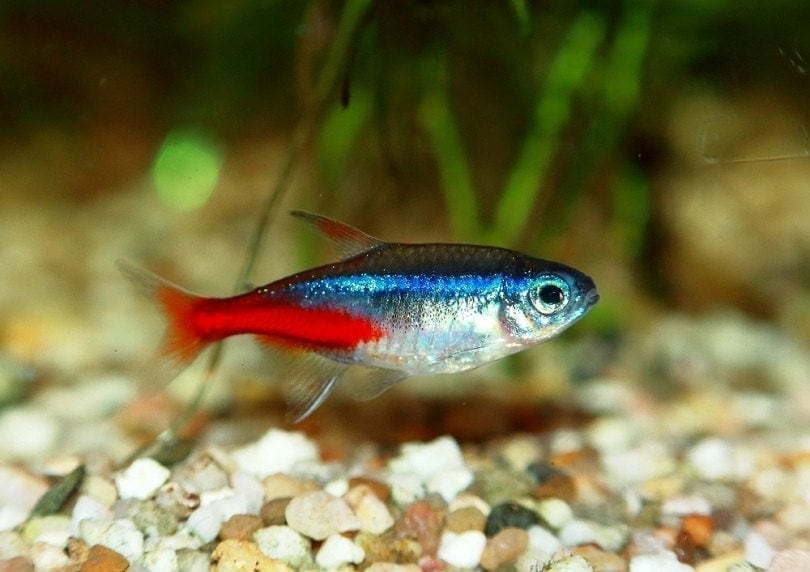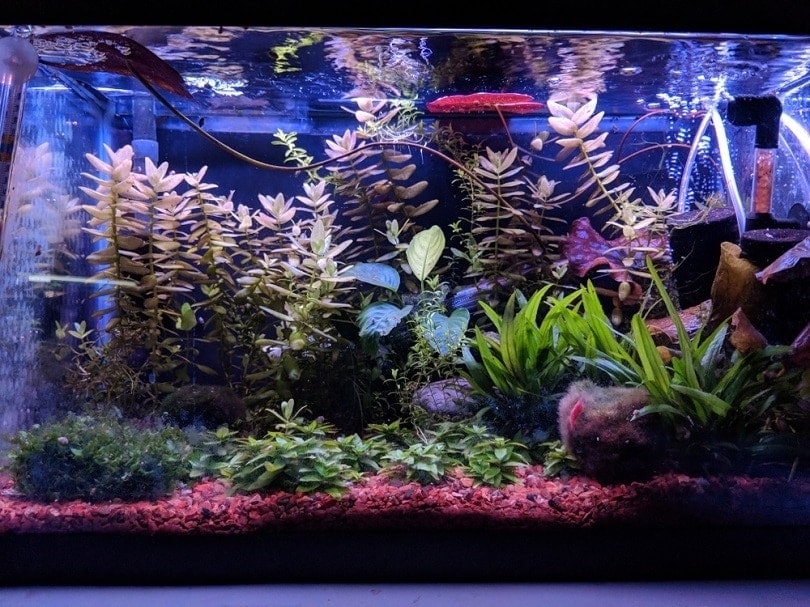How to Raise Aquarium Fish for Profit: Top 3 Tips & How to Sell Them

Updated on

If you’ve ever wondered where your local fish store sources their fish from, the answer might surprise you. Many small, privately-owned fish stores source many fish and invertebrates from local breeders in their area. Big chain stores usually will not purchase from locals due to contractual obligations and liability.
Raising and selling fish and invertebrates for profit does take work, but it’s very doable for many people. If you’re interested in learning how to raise fish for profit and you’re ready to put in the work, then keep reading for more info!
Raising Profitable Fish
- Choose Profitable Species: Some fish and invertebrates are more profitable than others because they reproduce quickly or are highly sought after. Guppies, mollies, and other livebearers reproduce quickly and often in large numbers, and they are often attractive fish, making them profitable for sale as pets or feeder fish. Some snails can also be profitable, like Malaysian Trumpet Snails which reproduce quickly and asexually. Other snails, like mystery snails, often lay clutches of hundreds of eggs, but they may take multiple weeks to hatch and even longer to be ready for sale. Dwarf shrimp reach maturity and begin reproducing quickly, but some varieties of dwarf shrimp are more difficult to care for than others, like bee and king kong shrimp. Nerite snails and amano shrimp require brackish water to grow from the larval stage to a juvenile stage, so it’s important to keep in mind that reproduction is only half the battle.
- Keep Healthy Tanks: Healthy tanks with clean water and no parasites are important to the health and wellbeing of your fish, and fish living in a healthy tank will more readily reproduce. Keeping healthy tanks also entails close monitoring of your tanks for parasites and pests. If you start selling to your LFS and they end up with an outbreak of leeches or planaria, they may be hesitant to purchase from you again.
- Choose Quality Nutrition: High-quality foods can lead to higher reproductive rates, less fish loss, and improved coloration. It may also help your fish grow more quickly. Hikari, Repashy, OmegaOne, and Cobalt Aquatics are among some of the trusted names in fish and invertebrate nutrition.

How to Sell Your Fish
- Choose Your Market: If you have a local fish store, then you may choose to try to sell to them. You may not get premium prices, but you will be able to get paid with low risk of fish loss. Some people choose to sell online, which can be profitable since you are selling directly to the consumer, but it also carries a higher risk of fish loss and leaves you in charge of directly dealing with the customer. If customer service isn’t your strong suit, selling to your LFS may be your best bet.
- Set Your Prices: A good starting point on pricing is to see what your species and variety of fish or invertebrate are currently selling for in the market you’re intending to sell in. Your price will likely be half of the selling price or less. Have a price you’re willing to ask for, but always have an absolute minimum in mind in case someone attempts to negotiate price with you. Be reasonable with your pricing, especially while you’re new on the scene.
- Find a Buyer: Once you’ve decided on your market and prices, it’s time to find a buyer. You can find a buyer by visiting or calling your LFS and asking them if they’re interested in what you’re selling. Start as close to home as possible and work your way out from there. If you’re planning to sell online, find a place where you can sell your fish. Some websites do not allow the sale of live animals, so make sure you are selling somewhere that selling animals is covered by the terms of service.
- Transport Safely: If you’re selling to a private store, then you need to package your fish up securely and prevent them from falling over and rolling around on the trip to the store. Helping your fish have as little stress as possible will increase the number of live animals that make it to the store and improve your sale outcomes. If you’re shipping animals, make sure they are packaged securely and in multiple layers so if there is a leak, they don’t lose all of their water. If you are shipping in hot or cold temperatures, be prepared to offer hot or cold packs to keep your animals safe in shipment.
- Accept Payment: Determine how you will accept payment before your first sale. Some stores may try to pay you in store credit, so plan ahead for this offer and determine if that’s a fair trade for you or if you want to be paid in cash. Accepting multiple forms of payments like cash, credit card, and online payments like Paypal and Venmo, will increase your chance of a sale by meeting people where they are with money. Not everyone has access to cash or online sales.
- Customer Service: For sales to local stores, be ready to have some level of customer service when it comes to the goods you’re selling. You want the vendor you’re selling to to be happy with the product they’re receiving. The same goes for online sales. You don’t have control over the post office or delivery company, so you’ll have to decide how you’ll handle delayed or lost shipments that are outside of your control. Being willing to offer discounts or replace lost animals can go far with people.
Optional Step: Set Goals
Depending on how regularly you want to receive income from your fish sales will depend on whether you want to set goals or not. If you’re selling fish because your guppies won’t stop having babies and you’re out of space, then you may not want to set goals for sales and just sell them off when your population gets too large. If it’s your intent to get regular income from selling fish or invertebrates, then it’s a good idea to set goals for yourself, whether it’s a monetary goal or a number of sales per month goal. Goal setting can keep you motivated and help you get the most out of your hustle.
Conclusion
Selling fish for profit takes work and planning, but it can be rewarding monetarily and emotionally. Seeing your fish or invertebrates making people happy can be a motivating and enjoyable feeling. Be willing to set rules for yourself and be willing to walk away from a transaction that you don’t feel is safe or fair, either for you or you fish. Once you start selling fish for profit, you may end up with 15 tanks before you know it!
See also:
- How to Safely Transport Fish For Short & Long Distances (Vet Answer)
- How to Manage pH in a Saltwater Tank: 5 Expert Tips
Featured Image Credit: chalermphon_tiam, Shutterstock











